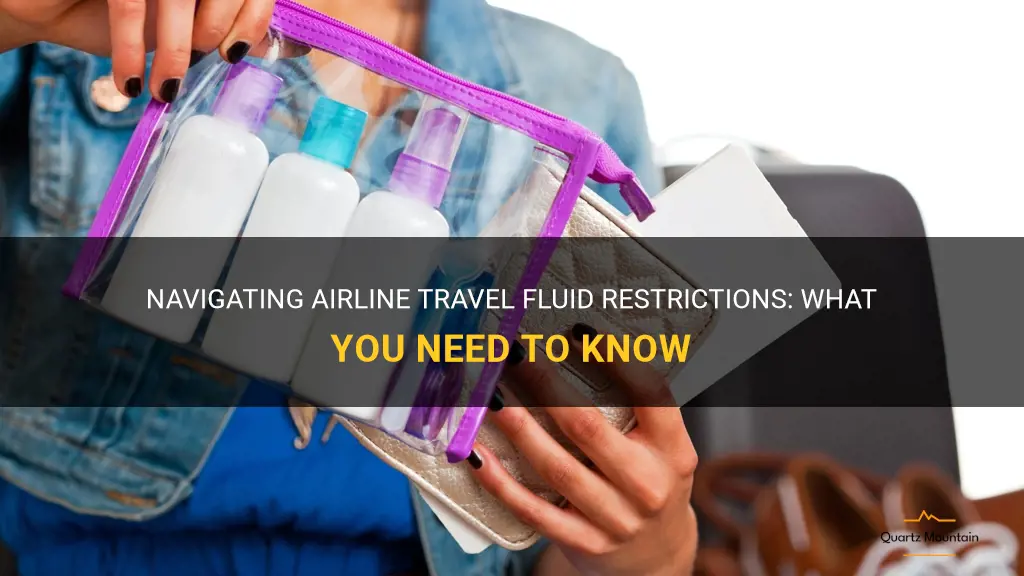
Airline travel fluid restrictions have become an essential part of our journeys, adding an extra layer of complexity to the modern travel experience. From the moment we step foot into an airport, we are met with a barrage of rules and regulations surrounding the liquids we can bring on board. Gone are the days of casually strolling through security with a bottle of water in hand; now, we must carefully navigate the intricate web of restrictions to ensure compliance. But why are these restrictions in place, and how do they truly impact our travel experience? Join us as we delve into the world of airline travel fluid restrictions, exploring their origins, their practical implications, and the ongoing debate surrounding their necessity.
| Characteristics | Values |
|---|---|
| Liquid limit | 3.4 ounces (100 milliliters) |
| Containers allowed | 1 quart-sized clear bag |
| Containers per passenger | 1 |
| Exceptions for baby formula | Yes |
| Exceptions for medication | Yes |
| Exceptions for duty-free liquids | Yes |
What You'll Learn
- What are the current fluid restrictions for airline travel?
- Can I bring larger bottles of liquids in my checked luggage?
- Are there any exceptions to the fluid restrictions for medical or infant needs?
- How strictly are the fluid restrictions enforced at airport security?
- Are there any alternatives to liquid toiletries that I can bring on a flight?

What are the current fluid restrictions for airline travel?
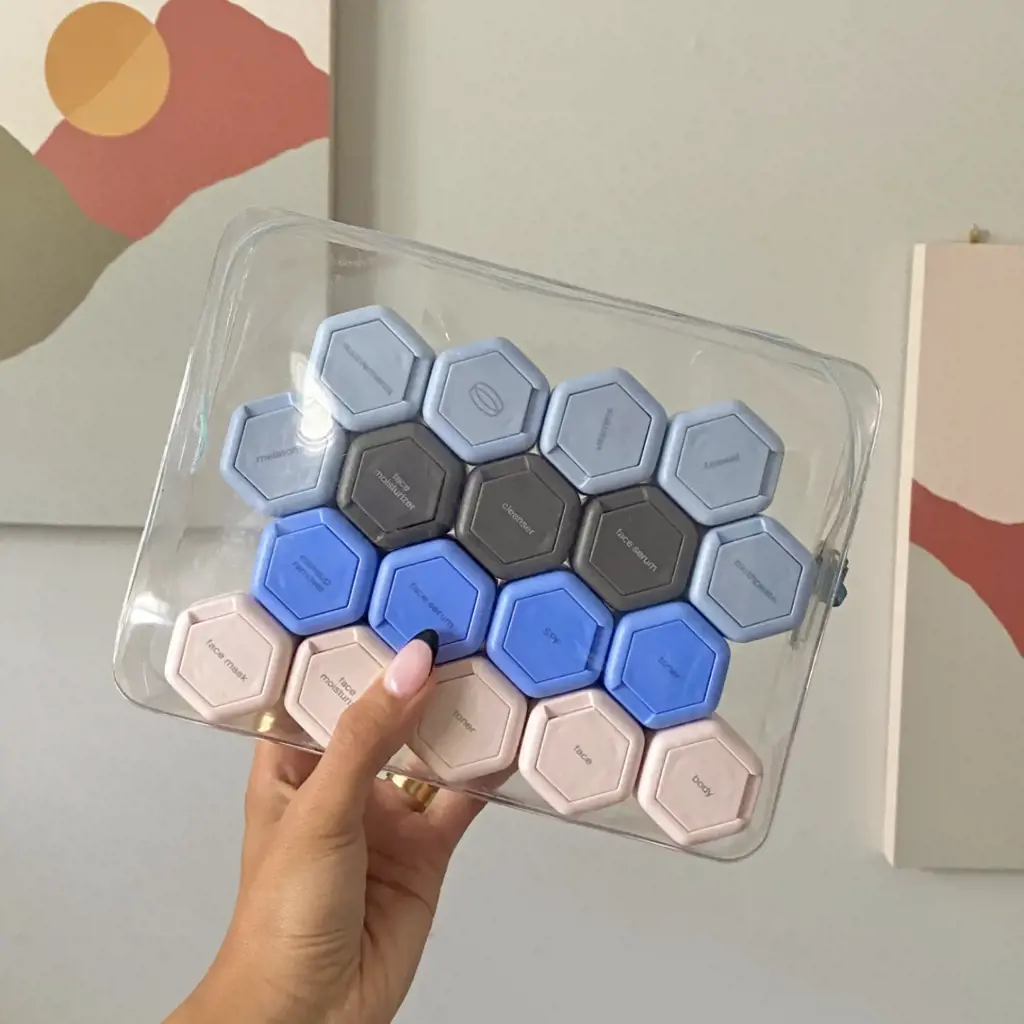
Airline travel has become increasingly common and convenient, allowing people to quickly and easily reach their destinations. However, there are certain restrictions in place, especially when it comes to carrying liquids on board. These restrictions were put in place by airlines and governing bodies in order to ensure the safety and security of passengers.
The current fluid restrictions for airline travel vary slightly from airline to airline and from country to country. However, there are some general guidelines that are followed by most airlines around the world.
The first and most important rule is that liquids, gels, and aerosols must be carried in containers that have a maximum capacity of 100 milliliters (3.4 ounces) each. These containers must be placed in a clear, resealable plastic bag that is no larger than one liter (one quart). Each passenger is allowed one plastic bag, which must be presented separately at the security checkpoint for screening.
Passengers are also allowed to carry larger quantities of liquids, gels, and aerosols, but they must be packed in checked baggage. This means that if you have a bottle of shampoo or a tube of toothpaste that is larger than the approved size limit, you should pack it in your checked luggage rather than carry it in your carry-on bag.
There are some exceptions to the fluid restrictions for airline travel. Medications, baby formula, breast milk, and juice for infants or toddlers are allowed to exceed the 100 milliliter limit. However, these items must be declared at the security checkpoint and may be subject to additional screening.
Additionally, duty-free liquids that are purchased in the airport or on board the aircraft are allowed to exceed the 100 milliliter limit. These liquids must be placed in a secure, tamper-evident bag that is provided by the retailer, and you must keep your receipt with you. The bag must remain sealed until you reach your final destination.
It's important to note that these fluid restrictions apply to all flights departing from or connecting through airports in the United States, as well as many other countries around the world. It's always a good idea to check with your specific airline and airport before your trip to ensure that you are aware of any additional restrictions or regulations that may be in place.
In conclusion, the current fluid restrictions for airline travel generally require liquids to be carried in containers no larger than 100 milliliters and placed in a clear plastic bag. Larger quantities of liquids must be packed in checked baggage. Exceptions are made for medications, baby formula, breast milk, and duty-free liquids. It's important to check with your airline and airport for any specific regulations that may apply.
Air France's Dog Travel Restrictions: Everything You Need to Know
You may want to see also

Can I bring larger bottles of liquids in my checked luggage?
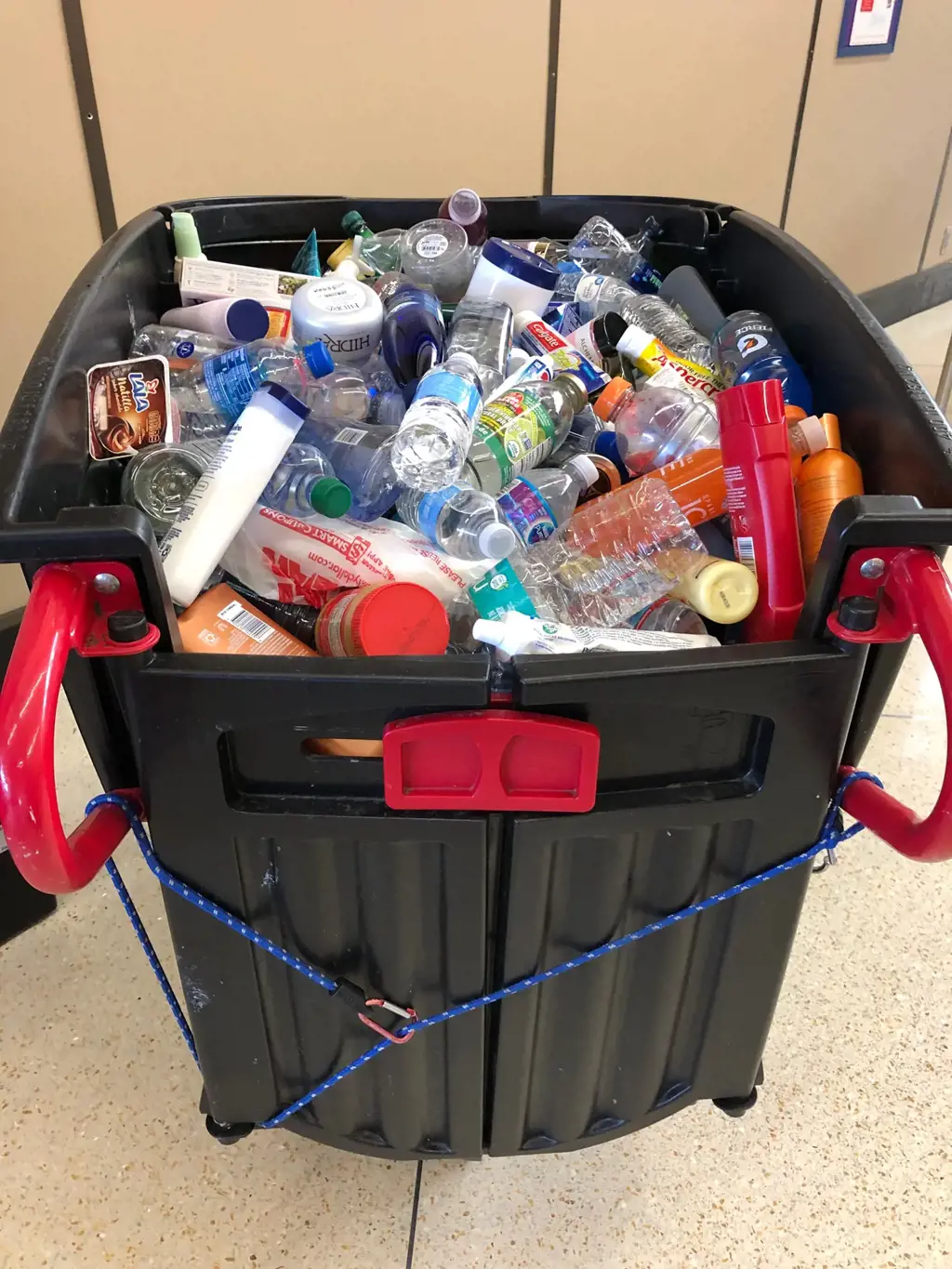
When it comes to packing liquids in your checked luggage, there are certain restrictions that you need to be aware of. These restrictions mainly focus on the size and type of liquid that you can carry in your checked bags. This article aims to answer the question, "Can I bring larger bottles of liquids in my checked luggage?"
The Transportation Security Administration (TSA) has specific guidelines in place regarding the transportation of liquids in checked bags. According to these guidelines, you are allowed to pack larger bottles of liquids in your checked luggage as long as they are not classified as hazardous materials. This means that common toiletries such as shampoo, conditioner, and body wash can be packed in larger bottles in your checked bags. However, it is important to check the specific rules for the destination you are traveling to, as some countries may have additional restrictions or requirements.
It is important to note that if you are carrying any liquids in your checked luggage, they should be securely sealed in leak-proof containers. This will help prevent any spills or leaks during the journey. Additionally, it is a good idea to place these containers in a plastic bag or wrap them in plastic to further protect your belongings in case of any leakage.
While you are allowed to bring larger bottles of liquids in your checked luggage, it is important to consider the weight limits imposed by airlines. Each airline has its own specific weight restrictions for checked bags, and exceeding these limits may result in additional fees. It is always a good idea to check with your airline beforehand to ensure that you are within the allowed weight limits.
In conclusion, you can bring larger bottles of liquids in your checked luggage, as long as they are not classified as hazardous materials. However, it is important to check the specific rules and regulations of your destination and airline to ensure compliance. By following these guidelines, you can pack your liquids securely and avoid any issues during your travel.
Latest Updates: Travel Restrictions in the US Amidst Covid-19 Surge
You may want to see also

Are there any exceptions to the fluid restrictions for medical or infant needs?
Fluid restrictions are often prescribed by doctors for certain medical conditions, such as heart failure or kidney disease, to help manage fluid balance in the body. Similarly, infants may have specific fluid needs due to their growing bodies and unique nutritional requirements. While fluid restrictions are generally advised for these patients, there may be exceptions for medical or infant needs.
In the case of medical needs, there are instances where fluid restrictions may be lifted or adjusted to accommodate certain conditions. For example, patients with severe dehydration or heatstroke may require intravenous fluids to restore their fluid balance. In this situation, the immediate medical need outweighs the usual fluid restriction guidelines.
Similarly, for infants, the fluid requirements may differ from those of older children or adults. Breastfed infants, for instance, obtain a significant portion of their fluid needs from breast milk, which naturally adjusts to meet the infant's changing needs. In this case, strict fluid restrictions may not be necessary as long as the infant is breastfeeding effectively and gaining weight appropriately.
In certain medical conditions, such as congenital heart disease or kidney dysfunction, infants may require specialized medical formulas to meet their nutritional needs. These formulas are typically prescribed by a healthcare professional and provide the necessary nutrients in an adjusted fluid volume. In such cases, the fluid restriction guidelines may be different than those for healthy infants and may require close monitoring by a healthcare team.
It is crucial to note that exceptions to fluid restrictions should only be made under the guidance and supervision of a healthcare professional. They will evaluate the specific medical or infant needs and determine the appropriate fluid restrictions or adjustments. Making changes to fluid restrictions without medical advice can have adverse effects on health and may worsen the underlying condition.
To summarize, while fluid restrictions are generally advised for medical or infant needs, there can be exceptions in certain situations. Medical emergencies or severe dehydration may require immediate fluid administration, while infants may have unique fluid requirements due to breastfeeding or specialized medical formulas. However, it is crucial to consult with a healthcare professional before making any changes to fluid restrictions to ensure the best possible outcome for the patient.
Grenada Travel Restrictions Update: What You Need to Know Before You Go
You may want to see also

How strictly are the fluid restrictions enforced at airport security?
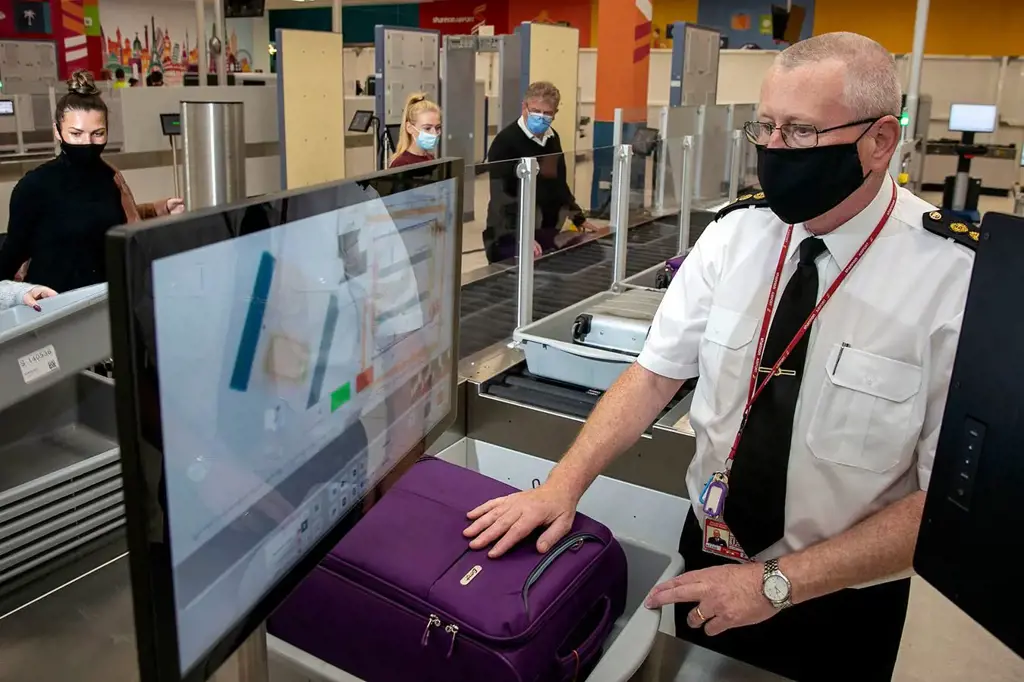
Airport security is a crucial part of travel and is meant to ensure the safety of all passengers. One common restriction that travelers often encounter is the limit on carrying fluids through security checkpoints. These restrictions are put in place to prevent any potential threats that may come in the form of liquid explosives or dangerous chemicals. But how strictly are these fluid restrictions enforced at airport security?
The Transportation Security Administration (TSA) is responsible for enforcing security measures at airports in the United States. When it comes to fluid restrictions, the TSA follows a specific set of rules known as the "3-1-1" rule. This means that passengers are allowed to carry liquids, gels, and aerosols in containers that are 3.4 ounces (100 milliliters) or less. These containers must be placed in a single quart-sized clear plastic bag and each passenger is only allowed one bag.
In general, airport security officers are vigilant in enforcing the 3-1-1 rule. Passengers are required to remove their plastic bag containing liquids from their carry-on luggage and place it in a separate bin to be screened. Any containers that exceed the 3.4-ounce limit must be discarded or placed in checked baggage.
However, there may be instances where security officers exercise some flexibility. For example, if a passenger accidentally brings a container that exceeds the limit, the officer may give the option to either discard the item or place it in checked baggage. Similarly, if a passenger has a medical or special needs item that exceeds the limit, they may be allowed to bring it through security after additional screening.
It's important to note that the level of enforcement can vary between different airports and even within different security checkpoints at the same airport. Some airports may have more stringent security measures in place and may strictly enforce the restrictions, while others may be more lenient. Additionally, random checks and screenings are also conducted to ensure compliance with the rules.
It's always a good idea for travelers to familiarize themselves with the fluid restrictions before heading to the airport. This can help avoid any potential delays or inconvenience at the security checkpoint. Travelers should also ensure that their liquids are properly packed in accordance with the 3-1-1 rule to make the screening process smoother.
In conclusion, airport security officers generally enforce fluid restrictions strictly in accordance with the 3-1-1 rule. However, there may be some flexibility depending on the circumstances. Travelers should be aware of the rules and regulations and follow them to ensure a smooth and hassle-free travel experience.
Travel Restrictions in Israel: What You Need to Know
You may want to see also

Are there any alternatives to liquid toiletries that I can bring on a flight?
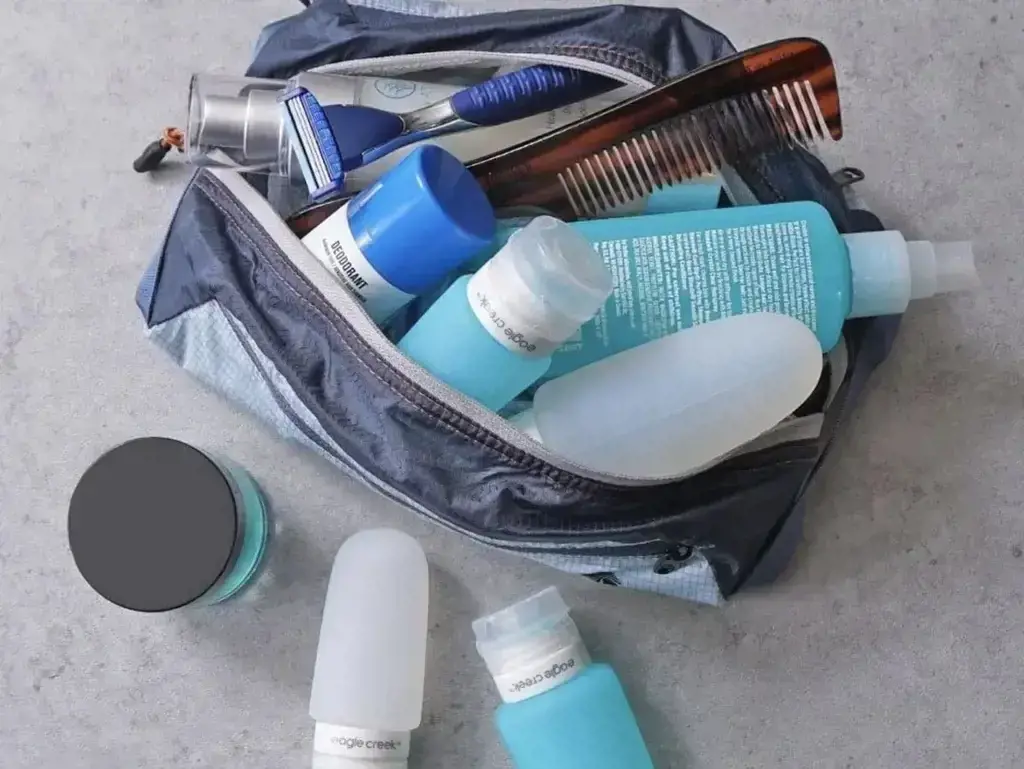
If you're planning to travel by air, you may be wondering about the restrictions on bringing liquids in your carry-on bag. The Transportation Security Administration (TSA) has implemented strict rules regarding the amount and size of liquid toiletries that can be taken on a flight. However, there are alternatives to liquid toiletries that you can consider to make your travel experience more convenient.
One alternative to liquid toiletries is solid toiletries. These are products that come in a solid form rather than a liquid or gel. Solid toiletries can include items such as solid shampoo bars, solid conditioner bars, solid body wash bars, and even solid toothpaste. These products are typically made with natural ingredients and are often packaged in a reusable or recyclable container, making them a more environmentally friendly option. Solid toiletries are compact and easy to carry, and they can be used multiple times, making them a great alternative for travel.
Another alternative to liquid toiletries is powdered toiletries. These are products that are in a powder form and can be mixed with water to create a liquid or gel consistency. Powdered toiletries can include items such as powdered face cleansers, powdered laundry detergent, and powdered toothpaste. These products are lightweight and can be easily packed in your carry-on bag without taking up too much space. Powdered toiletries are also convenient because you can mix as much or as little as you need, reducing waste.
If you prefer to stick with liquid toiletries, you can still bring them on a flight as long as they meet the TSA regulations. The TSA allows you to bring liquid toiletries in containers that are 3.4 ounces (100 milliliters) or less, and all containers must fit in a single quart-sized, clear, plastic bag. Each passenger is allowed one bag of liquid toiletries. It's important to ensure that the containers are properly sealed to prevent any leaks during the flight. Additionally, if you have any prescription medication, you are allowed to bring larger quantities, but you may need to provide a valid prescription or doctor's note.
It's also worth noting that some airports and airlines offer amenities such as complimentary toiletries or have refill stations where you can refill your travel-sized containers with liquid toiletries. This can be a convenient option if you prefer to use your own toiletries but don't want to worry about the restrictions on carrying liquids on the flight.
In conclusion, if you're looking for alternatives to liquid toiletries that you can bring on a flight, consider solid toiletries or powdered toiletries. These options are convenient, compact, and often more sustainable than their liquid counterparts. However, if you prefer to stick with liquid toiletries, you can still bring them on a flight as long as they meet the TSA regulations. Remember to properly seal your containers, pack them in a single quart-sized, clear, plastic bag, and follow any additional regulations at the airport or airline you're flying with.
Norway Imposes Travel Restrictions from the US: What You Need to Know
You may want to see also
Frequently asked questions
Most airlines follow the 3-1-1 rule for carry-on liquids. This means that passengers are allowed to bring containers of liquids, gels, or aerosols that are 3.4 ounces (100 milliliters) or less. These containers must be placed in a single quart-sized (1 liter) clear plastic bag and each passenger is allowed only one bag. Any liquids larger than 3.4 ounces must be packed in checked luggage.
Yes, passengers are allowed to bring medications and baby formula in quantities that exceed the 3.4 ounces limit. However, they need to notify the security officers and may be subject to additional screenings.
If a passenger accidentally brings a container of liquid that exceeds the 3.4 ounce limit in their carry-on bag, they will be asked to either discard the item or transfer it to their checked luggage. In some cases, the passenger may be subject to additional screenings and could experience delays at the security checkpoint.
Yes, there are a few exceptions to the 3-1-1 rule. Passengers are allowed to bring larger amounts of liquid medications, breast milk, and formula for infants or young children. These items may require additional screening procedures, including swabs or X-ray checks. It's always a good idea to check with the airline or airport security for specific guidelines on these exceptions before traveling.







